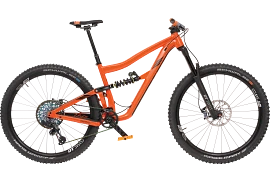A high quality of the components was important to the designers. Gerd Brücker, design engineer at by.schulz: "The aluminium tube is 3D forged with different wall thicknesses - this saves weight. The flat wire spring is located directly in the force flow and is 50 per cent compressible. It takes the load well and responds faster than round wire springs." Elastomer elements serve as end cap. The material selection for the four bearing points at the pivot points of the support, whose spring is virtually clamped in a parallelogram, was also a matter of finding the best solution in terms of quality. The challenge: "The axle makes oscillating movements when it is spring loaded. In the process, the bearings are subjected to high stresses in a small section," says Brücker. In the first series brass bushings and stainless steel axles were used. This meant that the bearings had to be lubricated regularly, and the manufacturers wanted to avoid this in the further development of the prop. That's when igus bearings made of high-performance polymer with incorporated lubricant came into view - and initially faced reservations. "At first, we didn't believe that plastic bearings would meet our high requirements," says founder Markus Schulz. But the developers - always open to new ideas - were willing to try. This included both driving tests by.schulz with converted seat posts and special test series in the igus laboratory.





